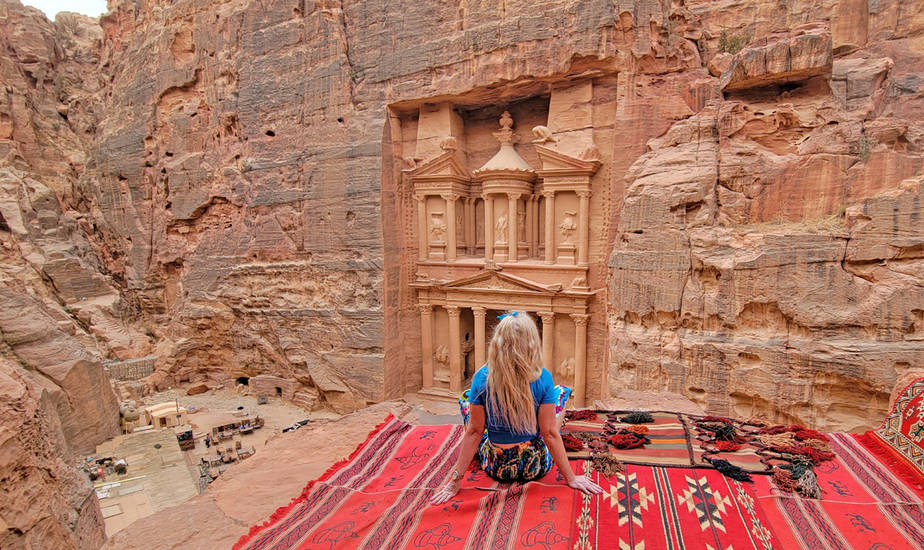Petra, Jordan – Travel Tips
Category
Categories
Popular Articles

**Overview of the Destination: Petra, Jordan**
Carved into the rose-colored sandstone cliffs, lies Petra, Jordan, one of the world’s most compelling archaeological sites. Named a UNESCO World Heritage site, Petra was once a flourishing trade center of the Nabataean empire between 400 B.C. and A.D. 106. Known for its architectural grandeur and fascinating history, it’s a must-visit for history buffs, culture lovers and wanderlust adventurers.
**Best Time to Visit**
The best times to visit Petra are during the spring (March to May) and fall (September to November) when the weather is agreeable. However, during these peak seasons, Petra can be crowded. Winter (December to February) can be chilly but offers fewer crowds. The Petra Night Show, a spectacular event when the city is illuminated with over 1,500 candles, is an unforgettable sight and worth planning your trip around.
**Climate & What to Pack**
The climate in Petra is semi-arid with hot, dry summers and cool winters. Daytime temperatures in the summer can soar, so lightweight, breathable clothing is ideal. In winter, layers, a warm jacket, and comfortable footwear are recommended. Regardless of the season, sun protection (hats, sunglasses, sunscreen) is essential due to the open nature of the site.
**Getting There**
The nearest major airport is Queen Alia International Airport in Amman, about 210km away. From the airport, you can hire a taxi or a private car, or use the JETT Bus service to reach Petra. Visitors from most countries can obtain a visa on arrival in Jordan; however, it’s best to check current regulations before you travel.
**Getting Around Locally**
Walking is the primary mode of transport within Petra. Horse carriage, donkey and camel rides are also available from the entrance to the Treasury to the Monastery. Although biking’s not typical, bicycle tours are gaining popularity recently.
**Safety Tips**
Jordan, on the whole, is considered to be among the safest destinations in the Middle East. However, as with any travel destination, general precautions should be taken. Avoid isolated areas after dark, and keep a close eye on your belongings. Be respectful of local customs and dress modestly.
**Top Things to Do & See**
In Petra, you’ll see historical sites like Al-Khazneh (the Treasury) and Ad Deir (the Monastery). It’s also an idea to go hiking on trails such as the Al-Madbah, or watch the sunset over Wadi Araba.
**Where to Stay**
For luxury stays, the Movenpick Resort or Petra Marriott Hotel offer comfort and convenience. For mid-range accommodations, consider the Petra Moon Hotel or the Seven Wonders Bedouin Camp for more of an immersive, local experience.
**Food & Local Cuisine**
Sample local dishes like Mansaf (lamb cooked in a sauce of fermented dried yogurt and served with rice) and Maqluba (an upside-down rice and baked eggplant dish). Street food stalls, local cafés and upscale restaurants offer choices that cater to various dietary and budgetary requirements.
**Cultural & Practical Tips**
The currency in Jordan is the Jordanian Dinar. The official language is Arabic, but English is commonly understood and spoken. Tipping is generally expected in Jordan. Electricity is 230V, and the plug type is C, D, F, G and J. Free Wi-Fi is available in many hotels and restaurants.
**Sustainable or Responsible Travel Tips**
The entrance fee you pay to Petra goes toward maintaining the site’s integrity. Use only designated trails and avoid touching the structures to prevent further erosion. Also, avoid purchasing antiquities as it encourages illegal trafficking.
**Personal Travel Tip**
Finally, my personal tip for first-time visitors: Start your day early to experience the magic of Petra in the soft morning light and to avoid the midday heat and crowds. Take some time to sit, reflect and soak in the majacular scenery of this ancient city.










